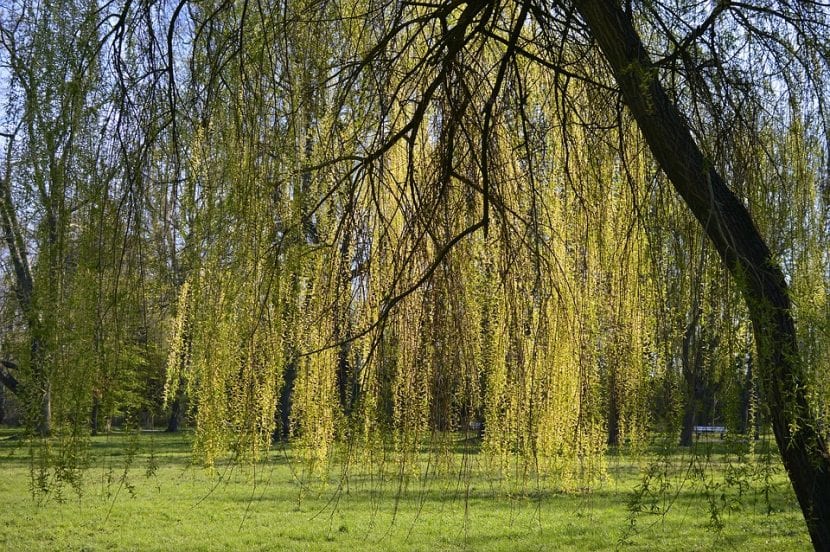
The Salix They are plants that, in general, take up a lot of space. But their size and beauty is such that when they are kept in large gardens they are an authentic natural wonder. The problem is when they are grown, perhaps out of ignorance or on a whim, in confined spaces: as they grow, their roots will cause damage if they are near pipes and so on.
It is completely normal to want to grow plants, but if you want to enjoy them to the fullest, it is important to know their characteristics so that in the future we do not have to get rid of them. Because the Salix, like other plant beings, have the right to live in the right place and receive the necessary care taking into account the climate and the characteristics of the garden. Let's get to know them.
Origin and characteristics of the Salix
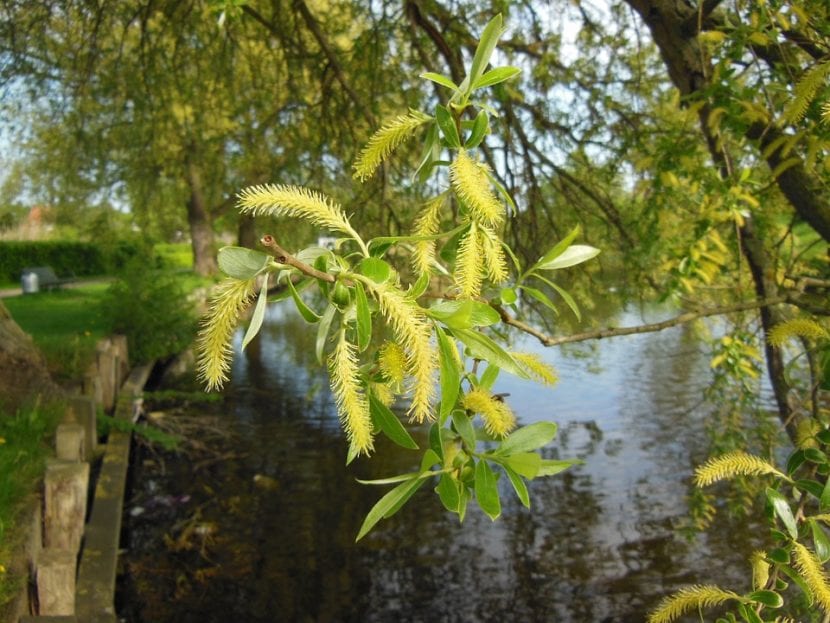
Known as willows, the Salix are a genus made up of some 400 species of deciduous trees and shrubs originating in the temperate and cold regions of the Northern Hemisphere. They are especially found near or next to fresh water courses, which is why their roots are very long and strong, since if they were not like that, they could not remain well anchored to the ground.
The trunk has a watery bark, and wood is hard, flexible and generally soft. The branches are slender and fibrous, and from them often elongated leaves sprout, but they can also be round or oval.
They are dioecious, that is, they have male and female flowers in different specimens. Catkins (the flowers of these plants) sprout in early spring. Cross-pollination between different species is common, which is why there are many hybrids. The fruit is a capsule.
Main species
Salix alba
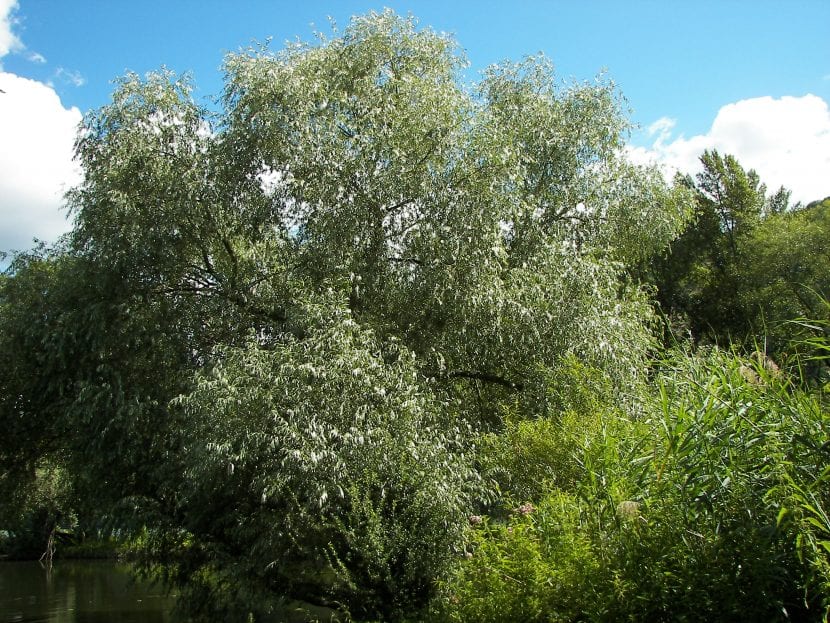
Image - Wikimedia / Willow
Known as salguero or white willow, it is a tree native to central and southern Europe, northern Africa and western Asia that grows to a height of 25 meters. Its leaves are silvery gray, serrated, with a silky underside and 5 to 12 cm long. The bark of its trunk is grayish.
Resists up to 20ºC.
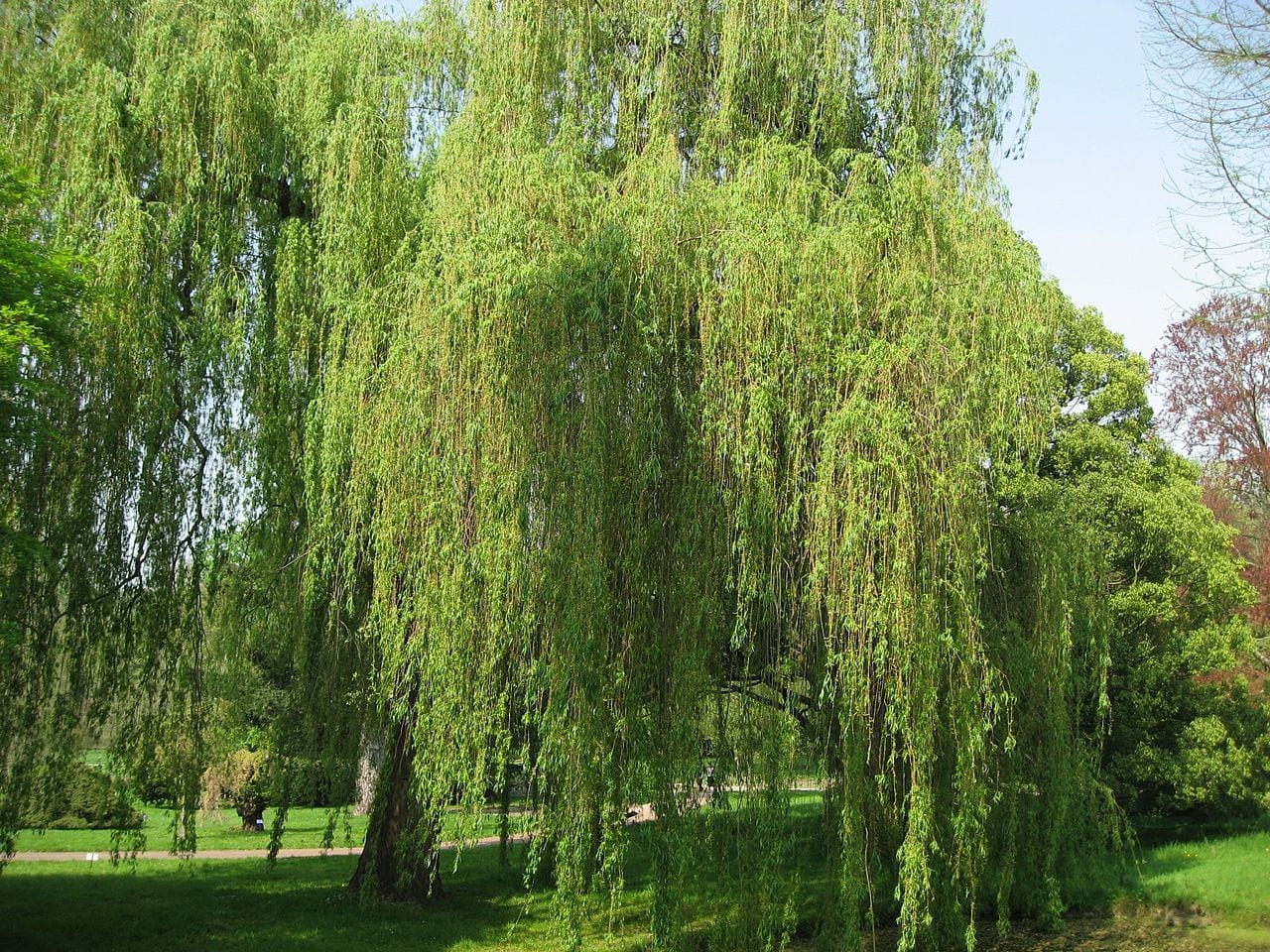
Salix atrocinerea
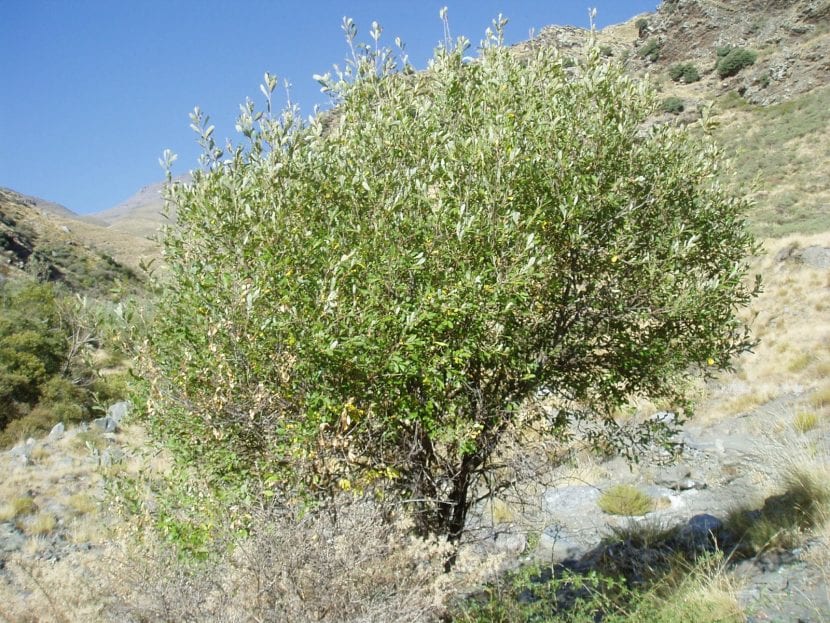
Image - riomoros.com
Known as ash willow or zalce, it is a tree native to Europe and North Africa that grows up to 22 meters high. The leaves are whole or toothed, hairy on both sides, and about 5-15cm long.
Resists up to -17ºC.
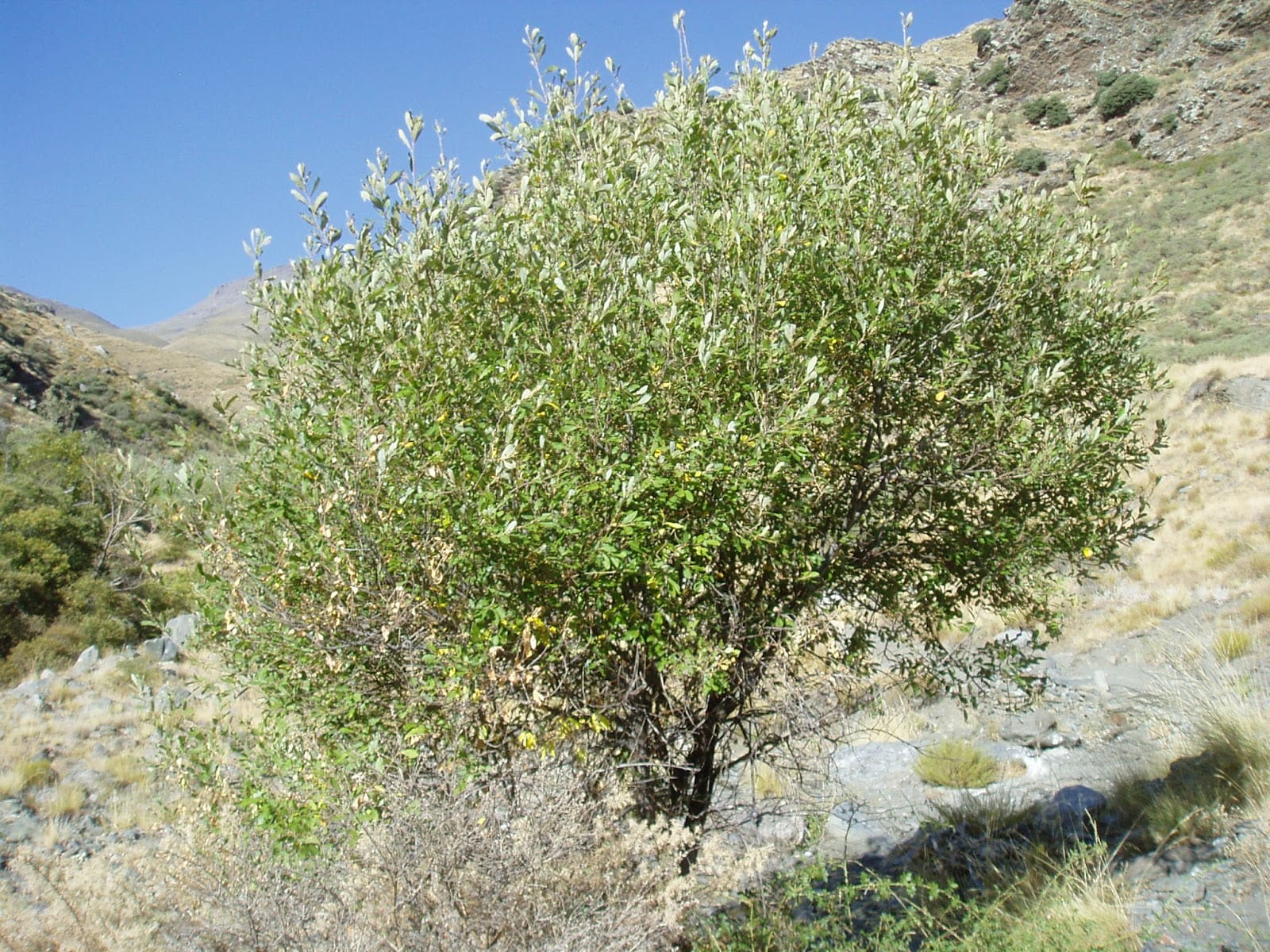
salix babylonica
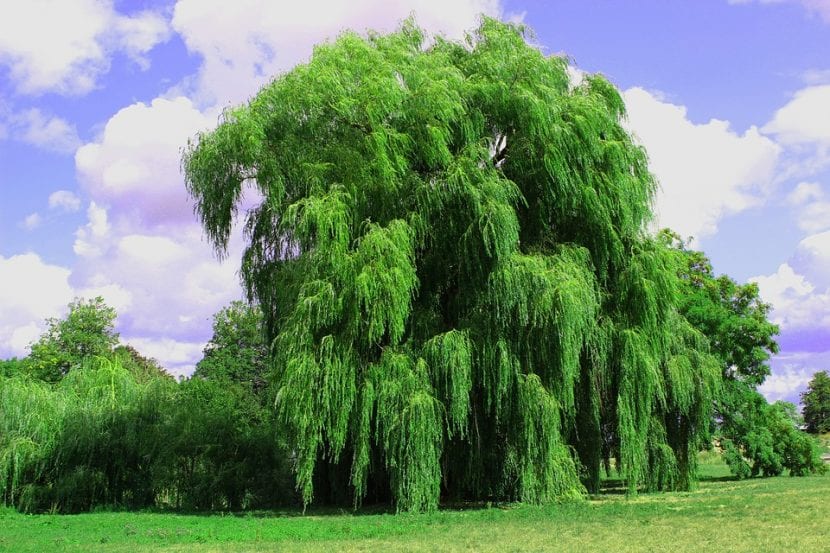
Known as weeping willow or pendulum willow, it is a tree native to East Asia that grows to 12 meters (rarely up to 26m) with hanging branches reaching to the ground. The leaves are linear, with a somewhat serrated edge, glabrous and glaucous.
It resists down to -18ºC, although it thrives better in more temperate climates.

salix canariensis
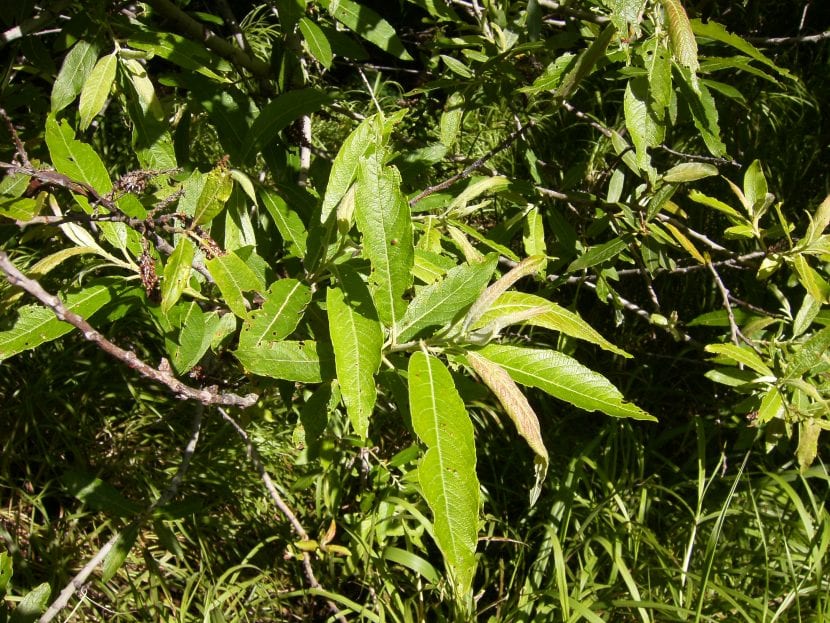
Image - Wikimedia / Beneharo Hdez.
Known as sao or Canary willow, it is a native species of the Canary Islands and Madeira that reaches a height of 10 meters. The leaves are oblong to lanceolate, with a green upper surface and pubescent underside, and are about 10cm long.
Resists up to -12ºC.
Salix caprea
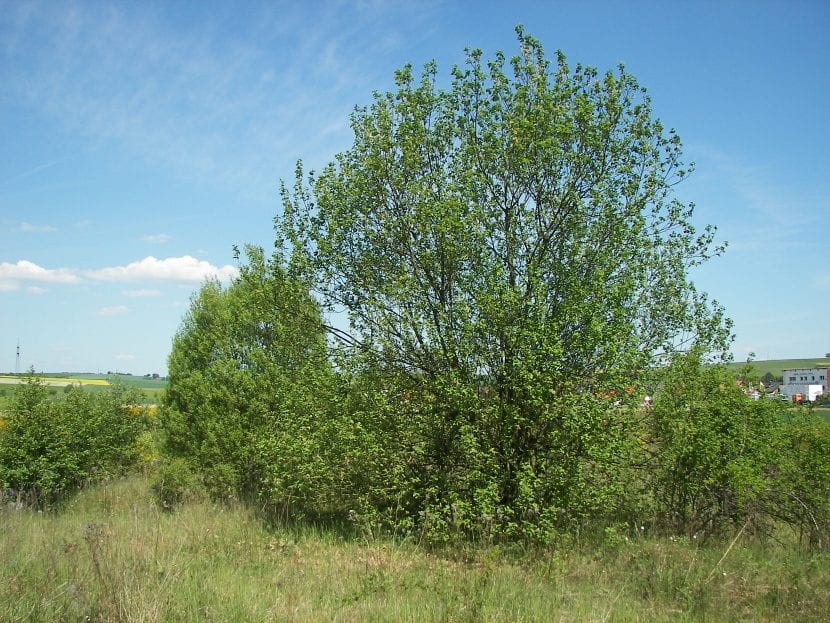
Image - Wikimedia / Willow
Known as goat willow, goat salce or sargatillo, it is a tree native to Europe and central and western Asia. Reaches a height of 6 to 10 meters, with 3 to 12cm long leaves that have a dark green upper surface and verdigris or verdiclaro on the underside.
Resists up to -18ºC.
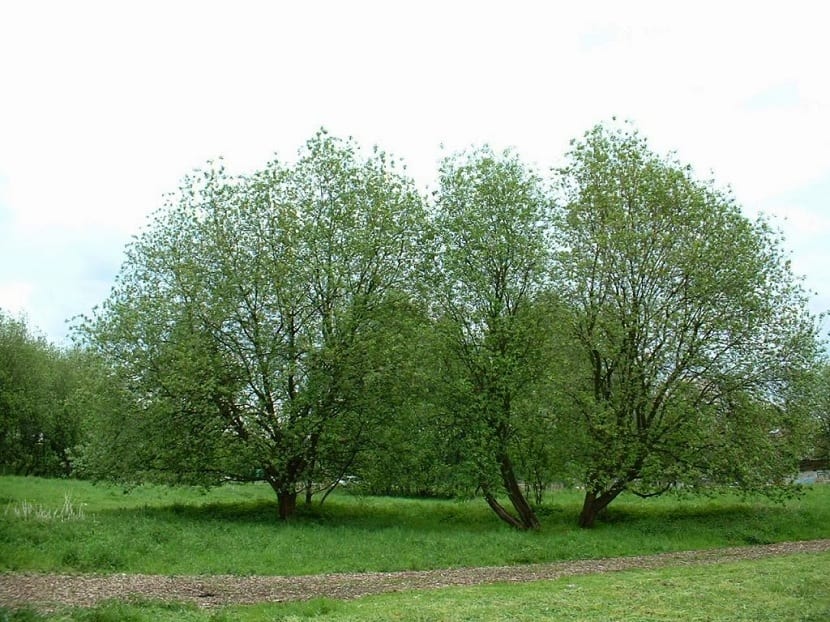
Salix cinerea
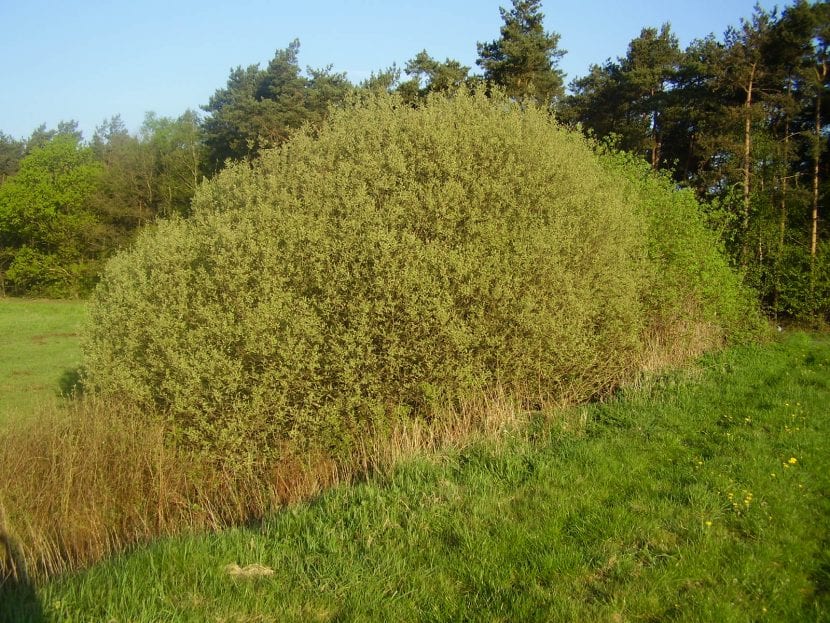
Known as ashy willow, it is a tree native to Europe and Western Asia that reaches 6 meters in height. The leaves are 12cm long, and are ovate or oblanceolate, glabrous, hairy and with gray tomentum. The upper surface is grayish green or olive green, and the underside is bluish green or grayish green.
Resists up to -18ºC.
Salix Eleagnos
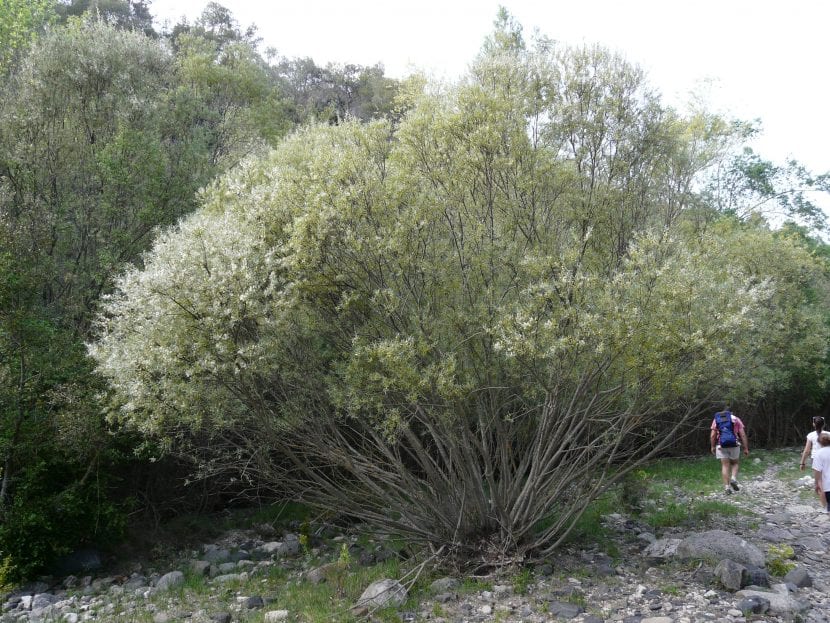
Image - Wikimedia / Pere López
Known as gray willow or twill, it is a tree native to central and southern Europe, Asia Minor and North Africa, which reaches a maximum height of 10 meters. The leaves are elongated, 16cm long, and have a dark green, glabrous upper surface and a white or ashy underside.
Resists up to -15ºC.
salix fragilis

Image - Wikimedia / Kruczy89
Known as wicker or brittle wicker, it is a tree native to Europe and western Asia that reaches a height of 10 to 30 meters. The leaves are bright green, with somewhat serrated margins, and are 9-15cm long.
Resists up to -18ºC.
Salix purpurea
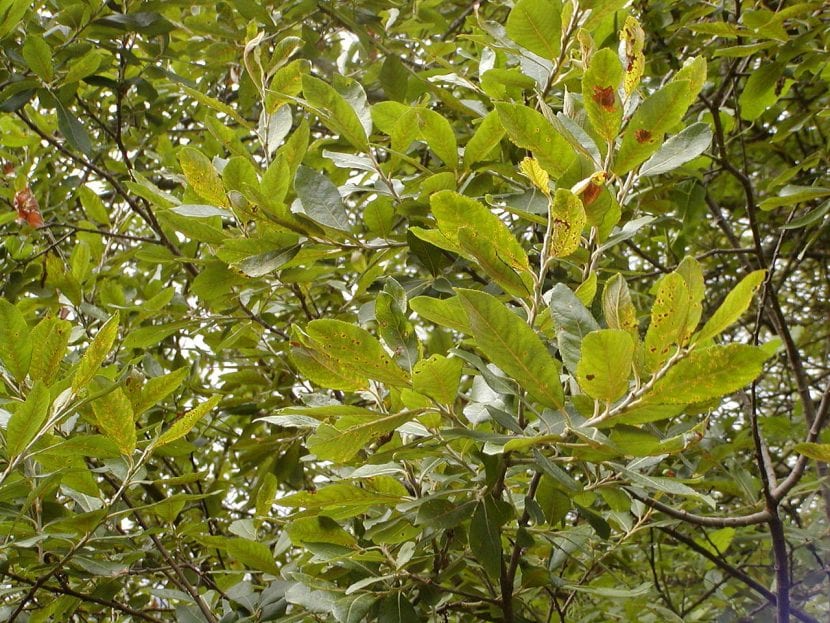
Image - Wikimedia / Corsica
Known as purple wicker, willow, red salce or river wicker, it is a tree native to Europe, North Africa and West Asia that reaches a height of 6 meters. Its leaves are lanceolate or linear, 4 to 12cm long, and dark green and matte on the upper side, and bluish-green on the underside.
Resists up to -20ºC.
Salix salviifolia
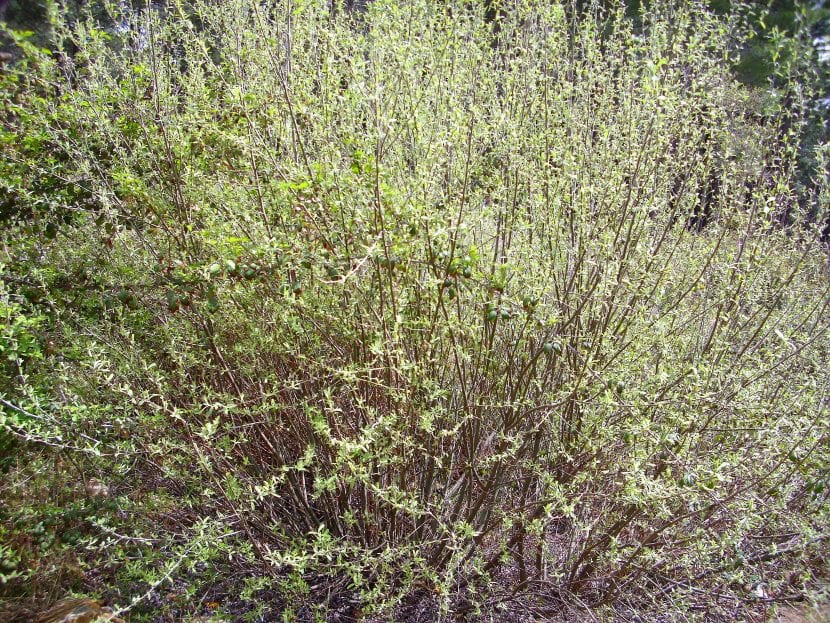
Image - Wikimedia / Javier martin
Known as white bardaguera, sarga or willow, it is an endemic tree of the Iberian Peninsula, although it is practically non-existent in Catalonia, the Valencian Community, Navarra, the southern half of Extremadura and the southeast of Castilla y León. Reaches 6 meters in height. The leaves are lanceolate, simple, dark green or greyish green, and hairy, especially on the underside, and are 2 to 10 cm long.
Resists up to -17ºC.
Salix viminalis
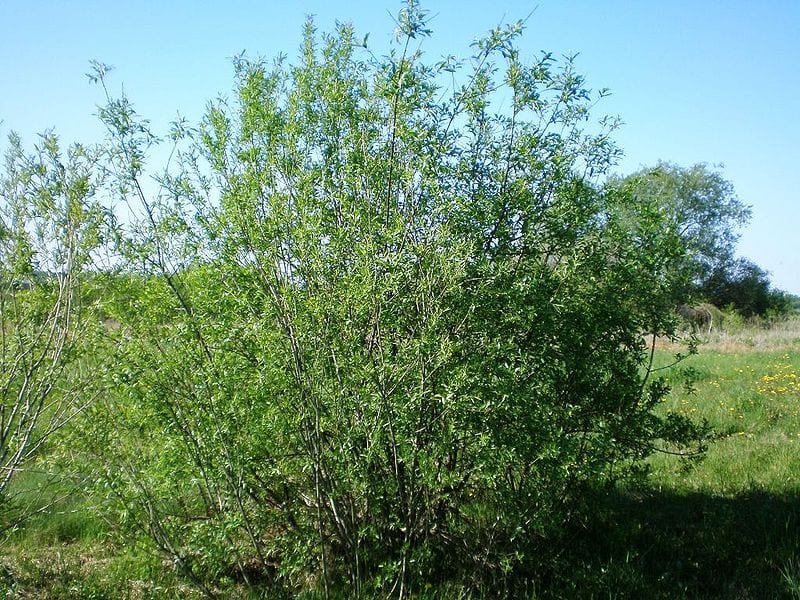
Image - Wikimedia / Hugo.arg
Known as white wicker or wicker, it is a tree native to Europe and Asia that reaches a height of 10 meters. The leaves are elongated, 5 to 15cm long, hairy, and with a green or matte upper surface.
Resists up to -18ºC.
What are their cares?
If you want to have a willow tree in your garden, we recommend providing it with the following care:
Location
They are plants that must be abroad, in full sun or in semi-shade. Due to their characteristics, it is necessary that they be planted at a minimum distance of 10 meters from pipes, walls, etc.
Earth
They grow in humid soils, rich in organic matter and often limestone. (with exceptions, such as Salix salviifolia preferring acidic soils).
During their younger years they can be potted with mulch (for sale here) mixed with 30% perlite (for sale here), but we advise planting them in the ground as soon as possible so that they can have an optimal development.
Irrigation
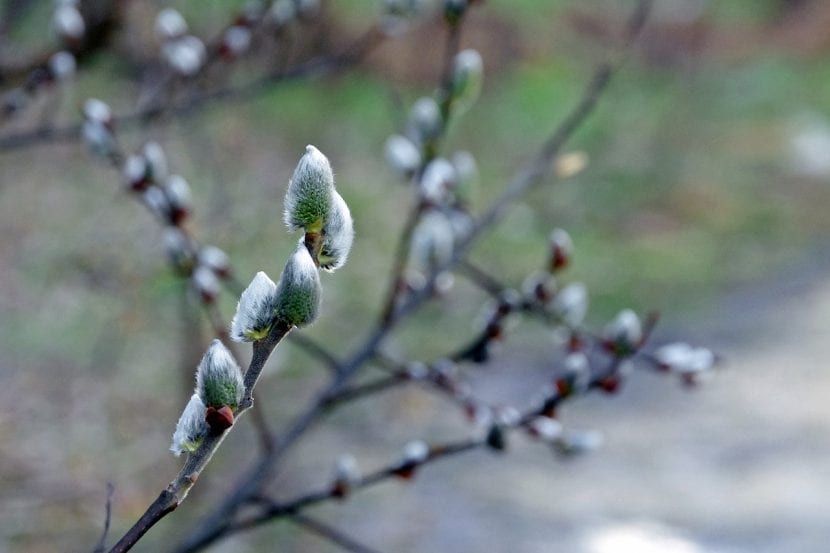
Irrigation must be frecuente. They do not withstand drought, and they like to always have the soil somewhat moist.
Subscriber
From early spring to late summer It is advisable to pay them with ecological fertilizers, such as guano, compost, or green manure, among others.
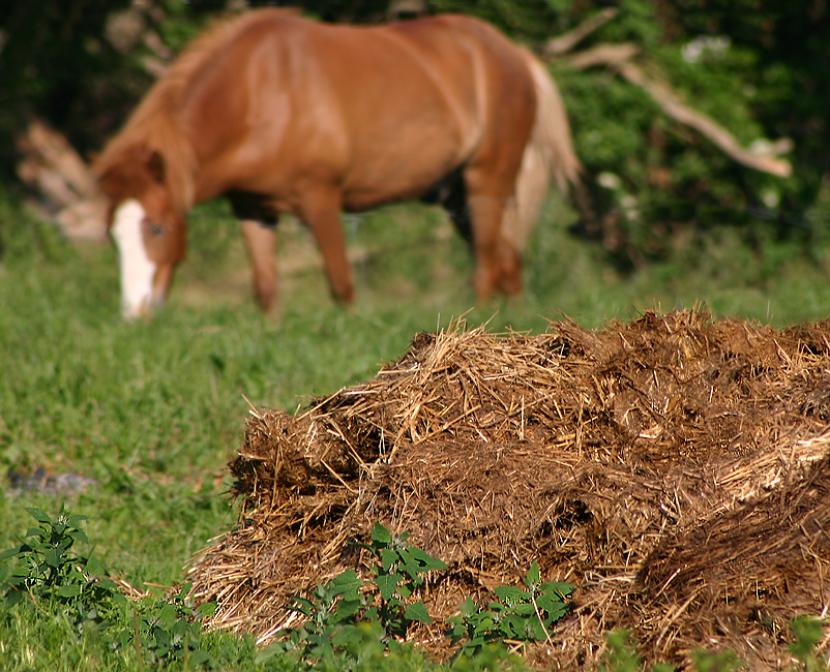
Pruning
Willows they should not be pruned, since they tolerate it very badly. It is not uncommon for them to get sick (or even end up dying) after a more or less drastic pruning.
What can be done is to cut the branches that are dry, and only at the end of winter.
Multiplication
They multiply by cuttings in late winter. To do this, cut a semi-woody branch, measuring about 35cm long, impregnate the base with rooting hormones (for sale No products found.) and finally plant it (not nail it) in a pot with drainage holes (for sale here) filled with previously moistened vermiculite.
Keeping the substrate moist, it will root in about 20 days. To help it, you can spray it once a day to keep it hydrated.
Plagues and diseases

Salix are plants that are quite sensitive to pests and microorganisms -especially fungi- that cause diseases:
Pests
- Mealybugs: they can be algonous or limpet-like. They measure no more than 0,5cm, and feed on the sap of the leaves, rarely from the young branches.
You can combat them with diatomaceous earth (for sale here). See file. - Chrysomelas: they are beetles that, in their larval stage, feed on the leaves.
Fight in spring with malathion. - Defoliator caterpillars: like the walnut caterpillar, or the liverwort caterpillar, they feed on the leaves, leaving the willows without them.
They are fought when they are still small with malathion. - Aphids: they are small insects, about 0,5 cm long, green, yellow or black, that feed on the sap of the leaves (and in other plants also of the flowers).
They are fought with diatomaceous earth or potassium soap (for sale here). See file.
Management
- Leaf spots: it is not important, but it is necessary to collect the falls during the autumn to avoid re-infection. If it happens often, treat with copper oxychloride or zineb.
- Powdery mildew: it is a fungus that produces a white powder that covers the leaves. It is not important, but can be treated with copper-based fungicides. See file.
- Sheep of the leaves: Towards spring, some of the leaves and branches blacken and fall off, and the rest wilt. Small cankers will appear on the branches.
It is prevented with copper oxychloride as soon as the buds awaken, but if there are already symptoms, the affected parts must be pruned and burned.
Planting time
En spring, when the frosts have passed.
Rusticity
It depends on the species, but they all resist cold and frost.
What uses is it given?

Ornamental
The Salix are very decorative plants, ideal for growing in spacious gardens, especially if they have a watercourse nearby or are in a place where it rains often.
Medicinal
Salicin is extracted from willows, which is an active extract with which aspirin, a non-steroidal anti-inflammatory drug, is made.
But also, already in the past, towards the V century a. Both Assyria, Sumer and Egypt the bark was used to relieve pain and reduce fever.
Food for animals
The shoots of some species, such as the Salix caprea, can be used as food for goats.
Basketry
There are several willows of which the branches are used to make basketsand salix fragilis or Salix viminalis.
What did you think of the willows?